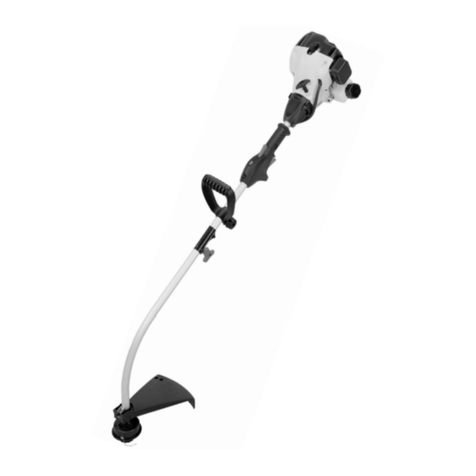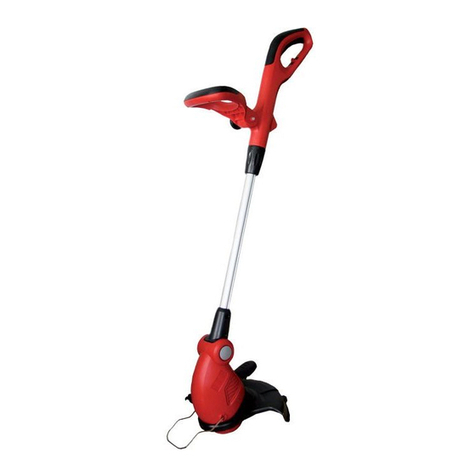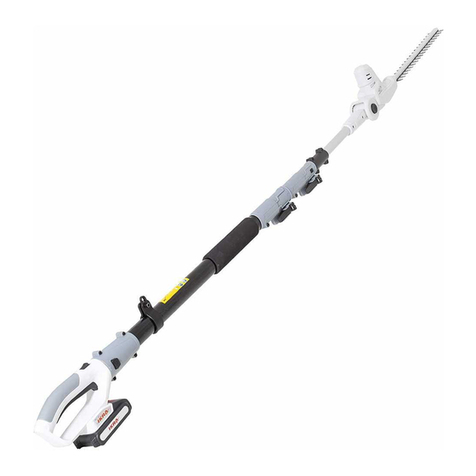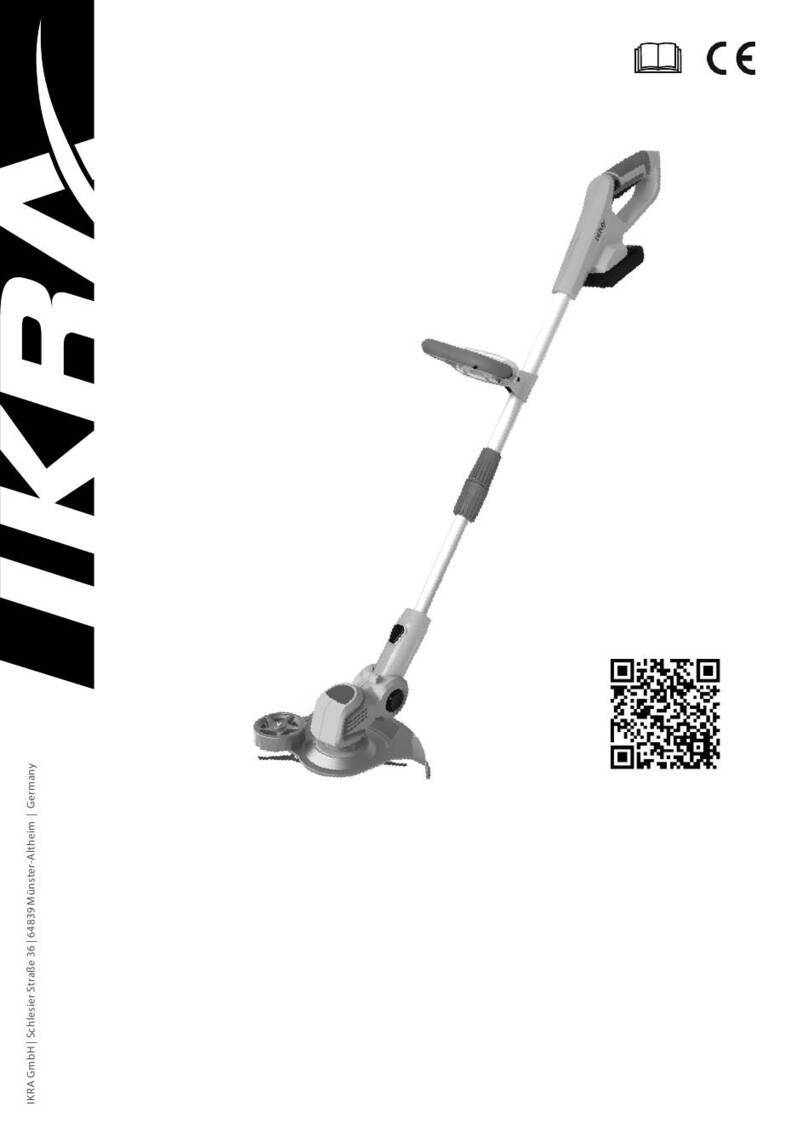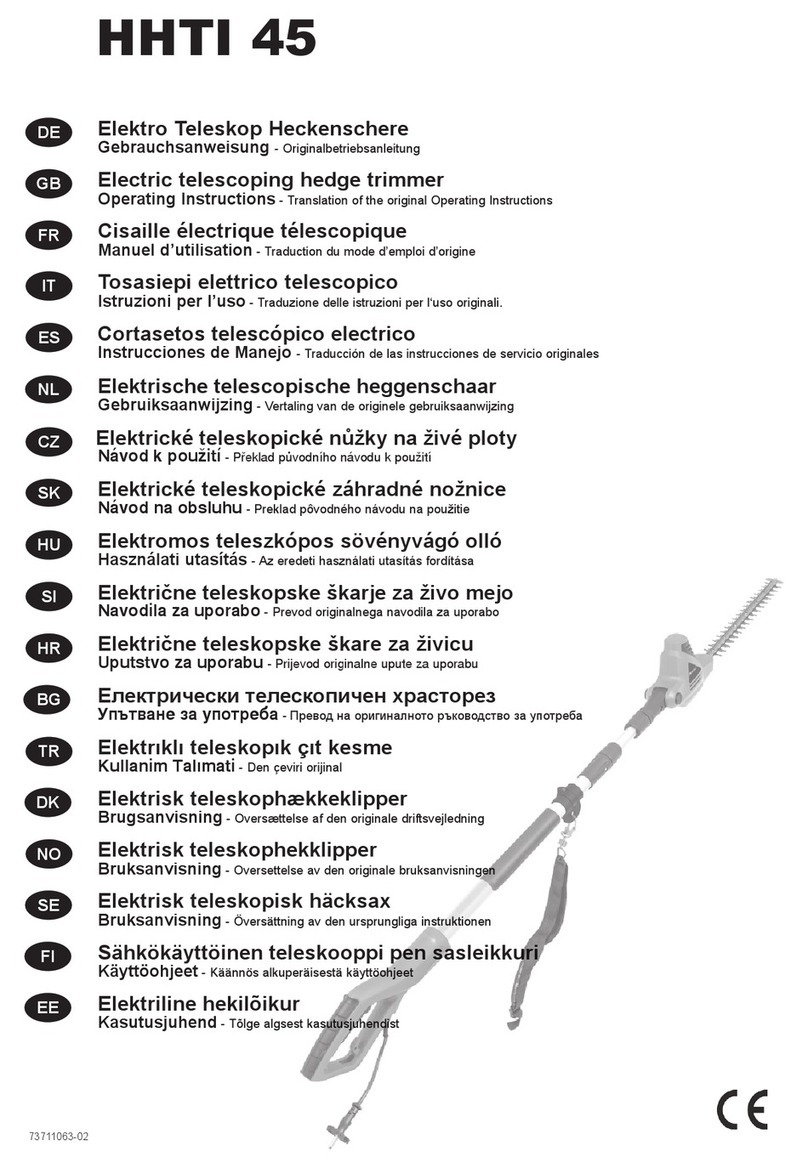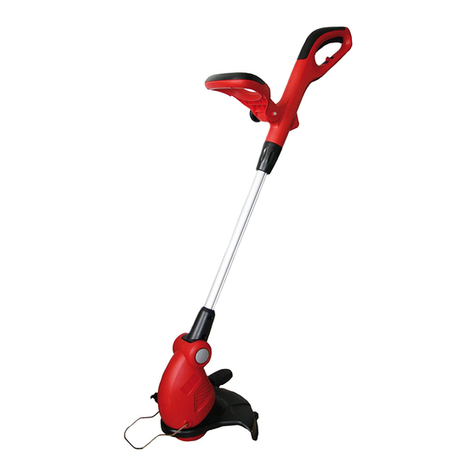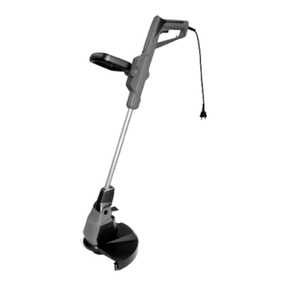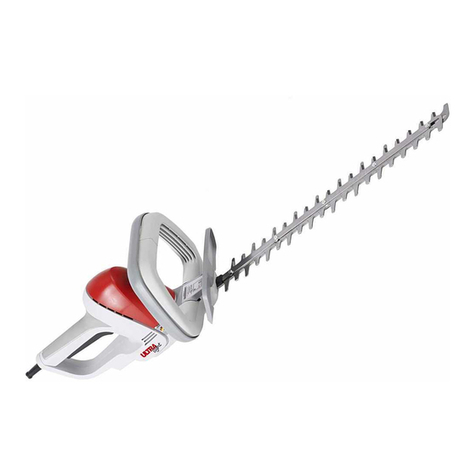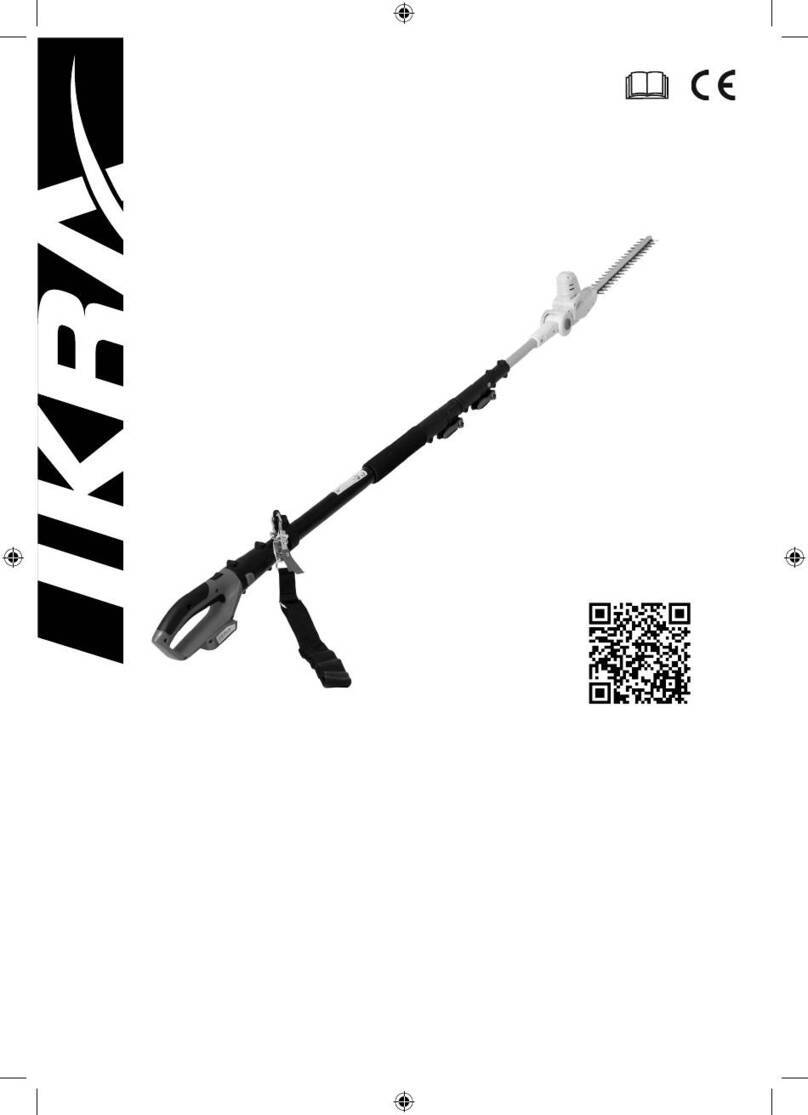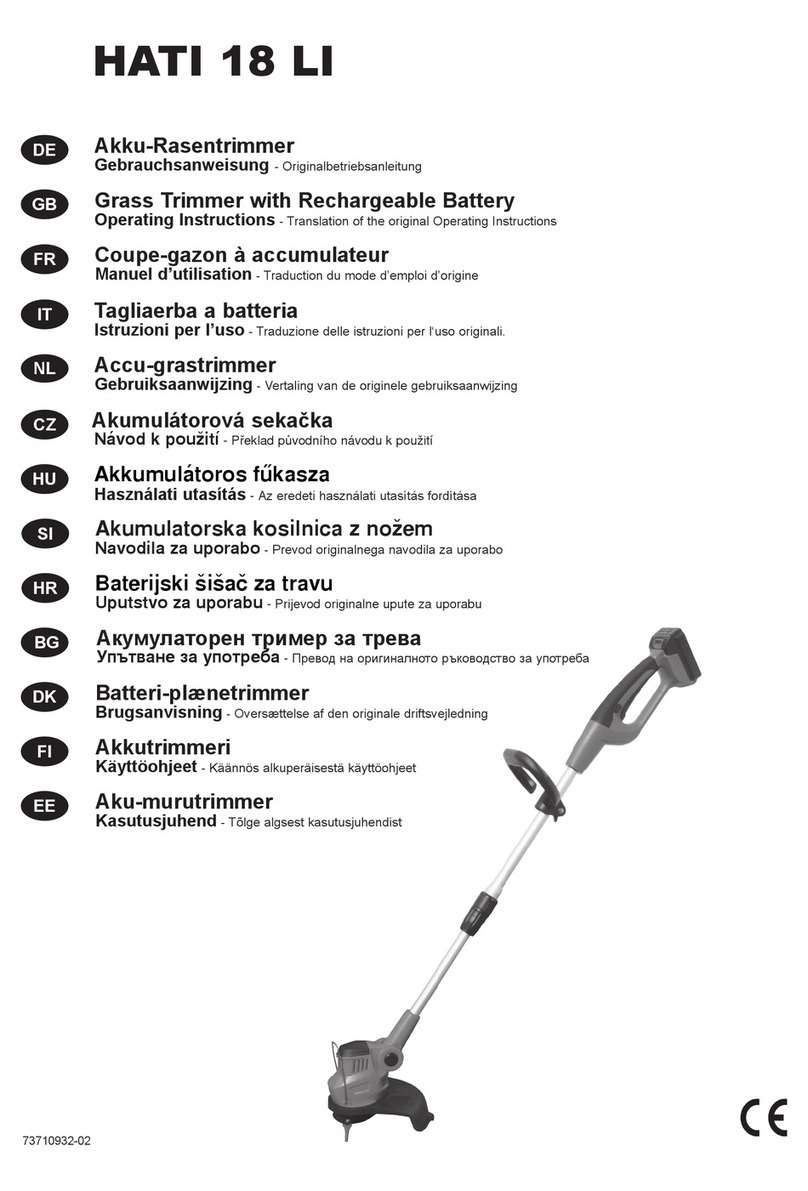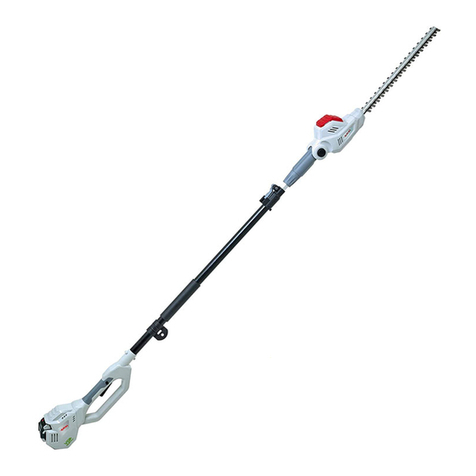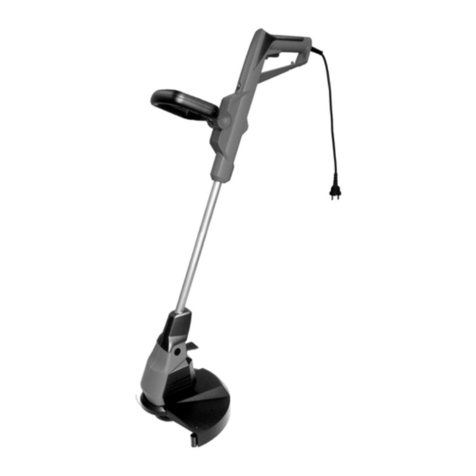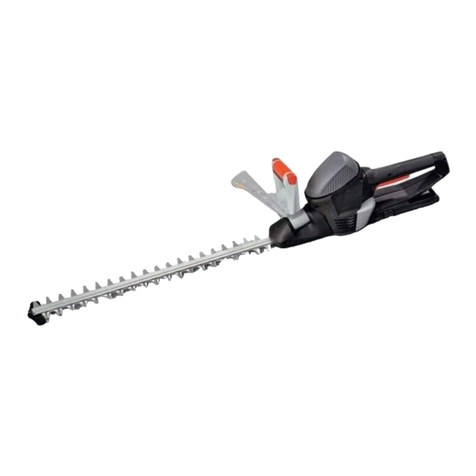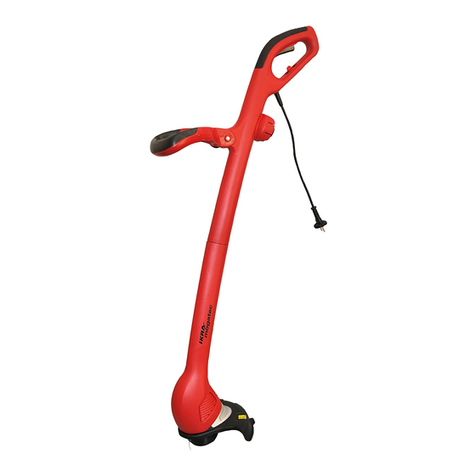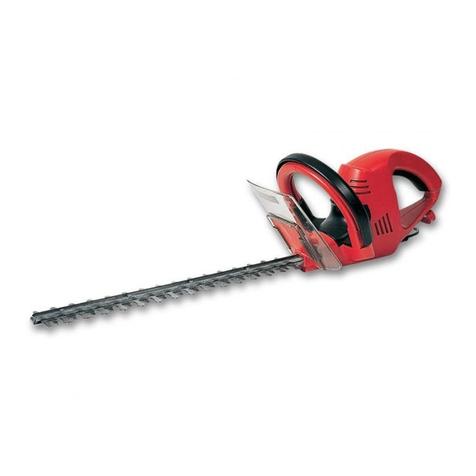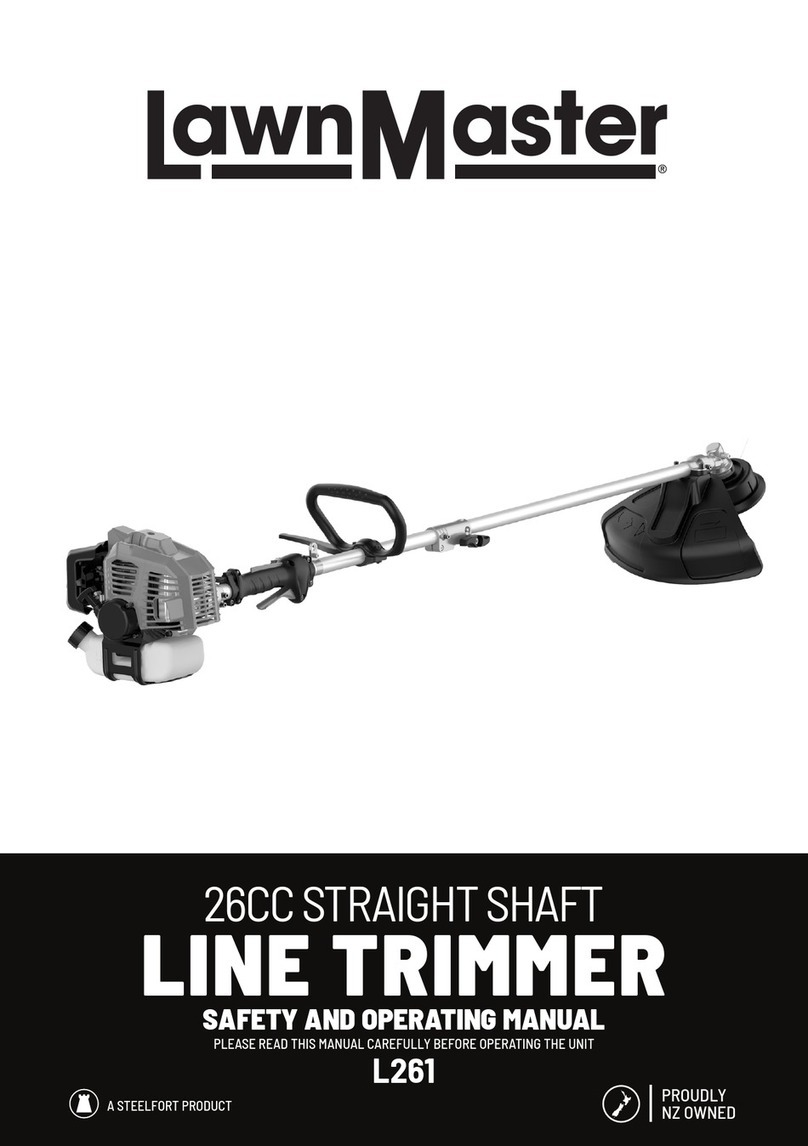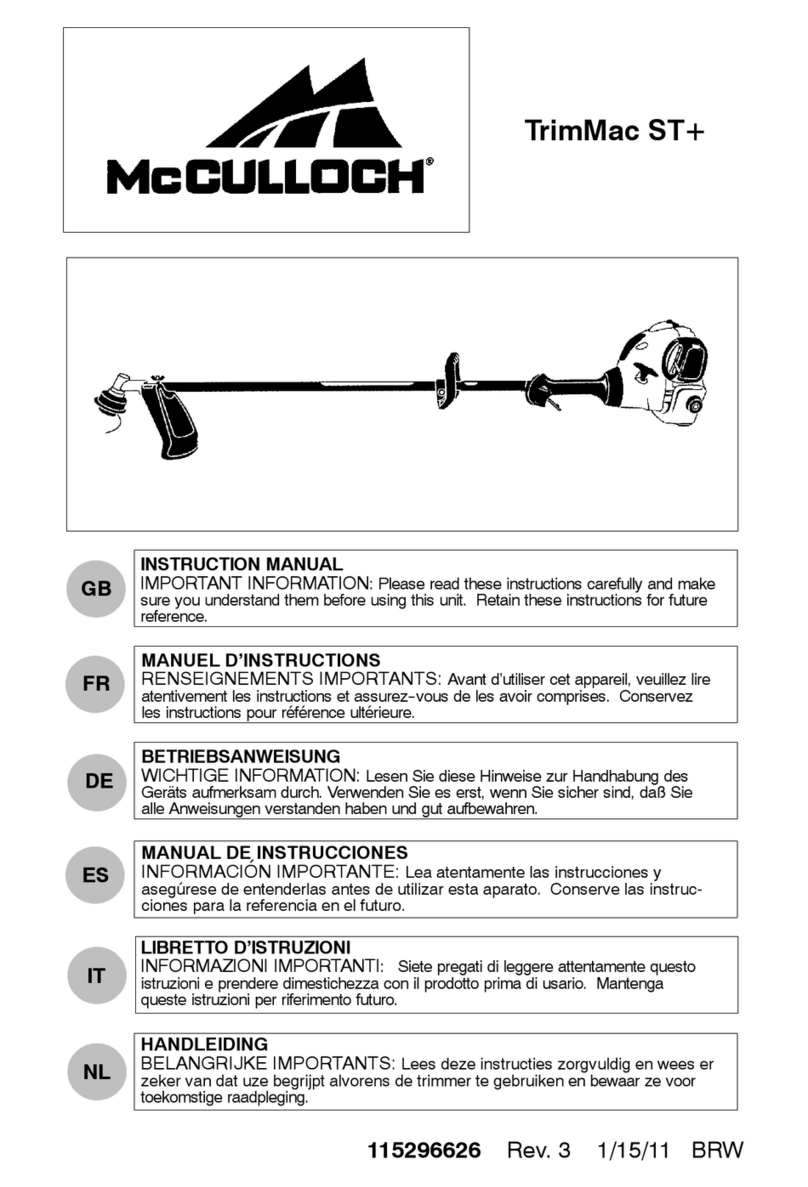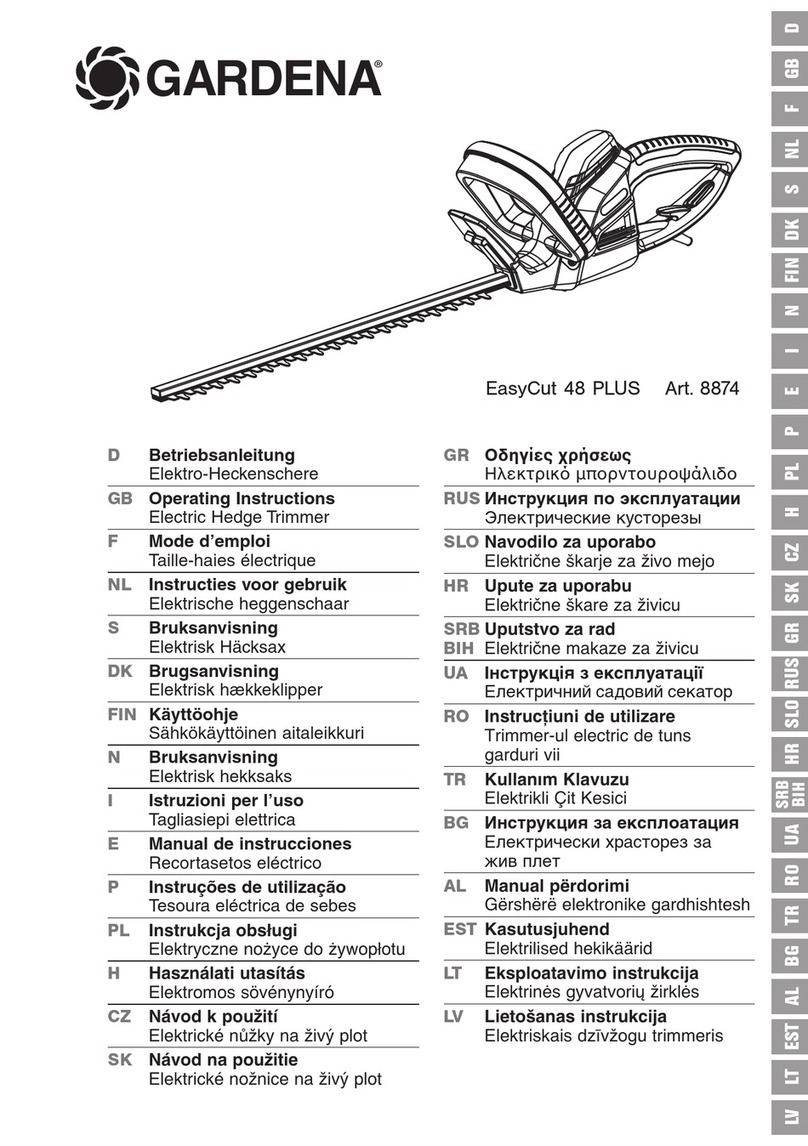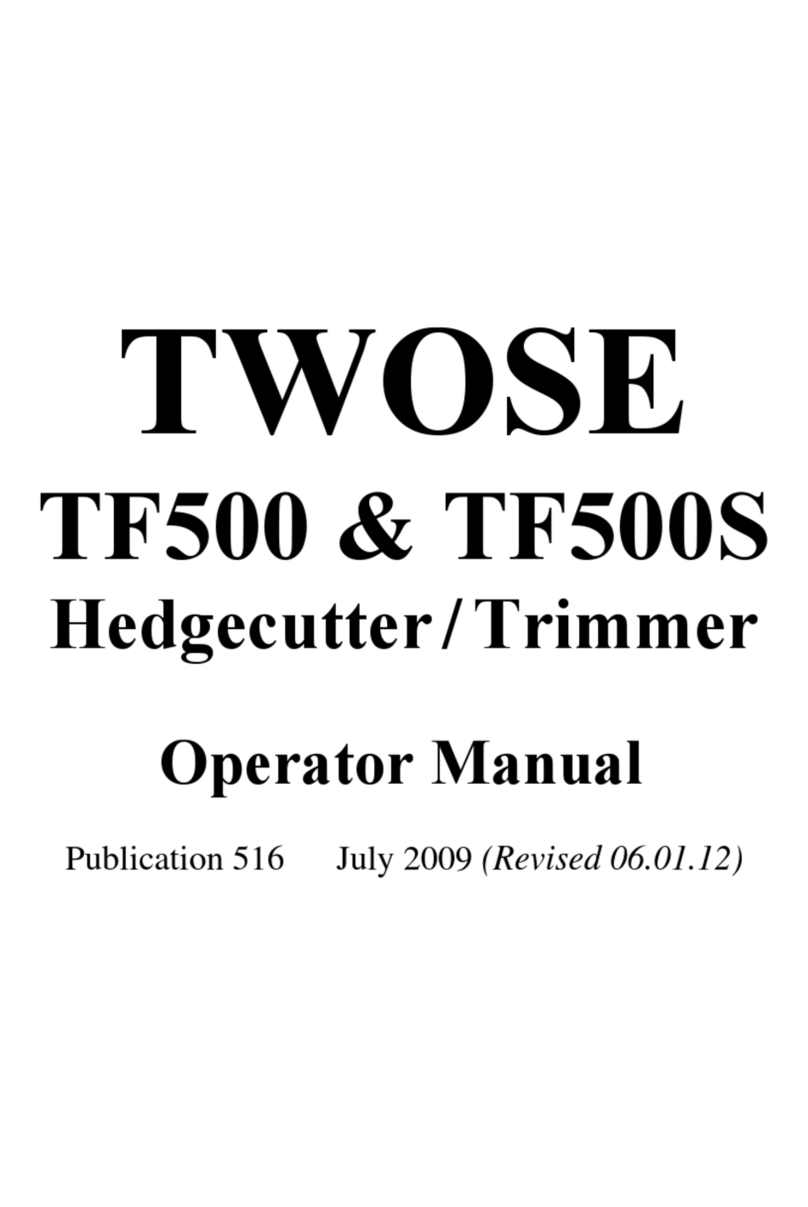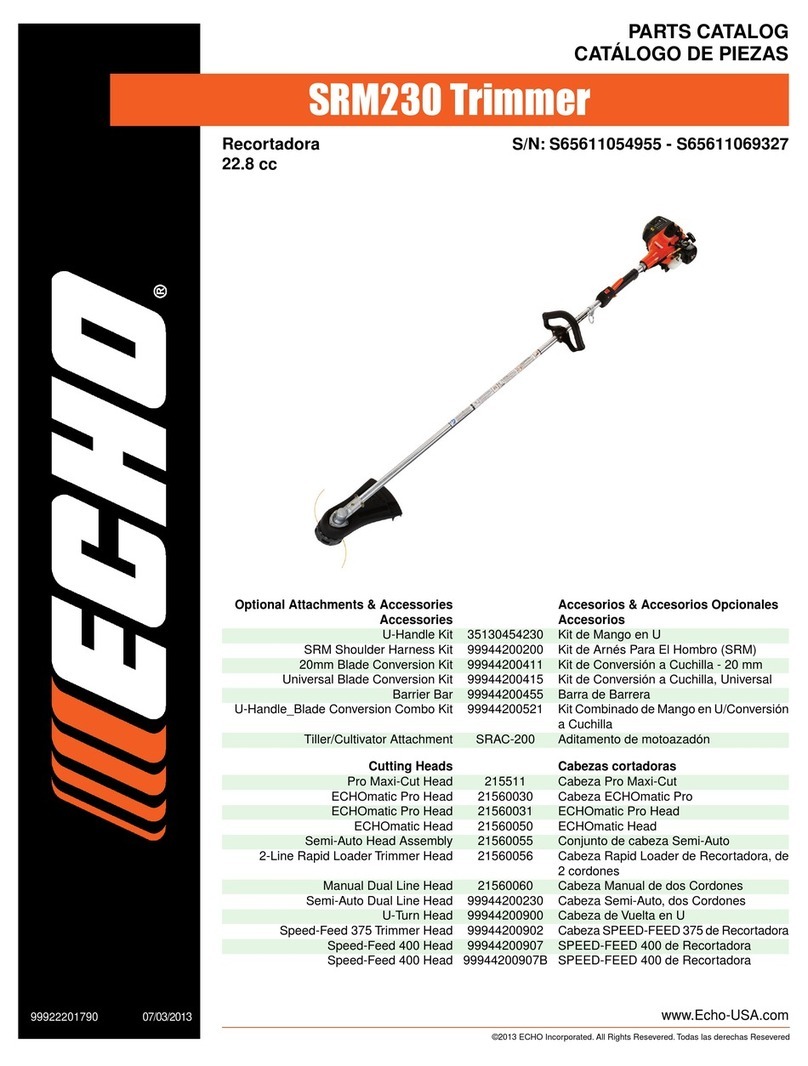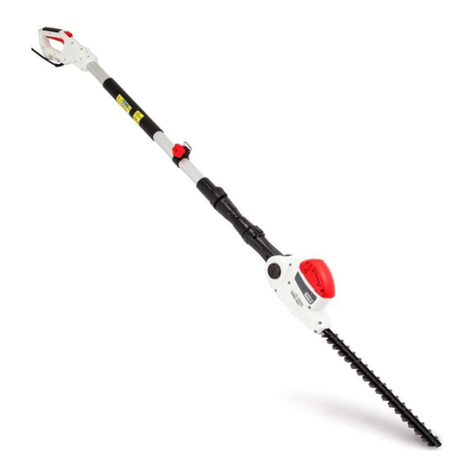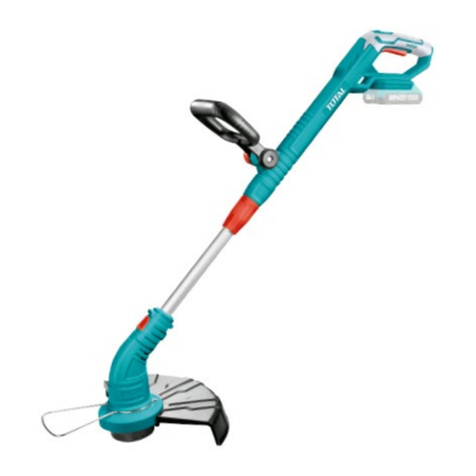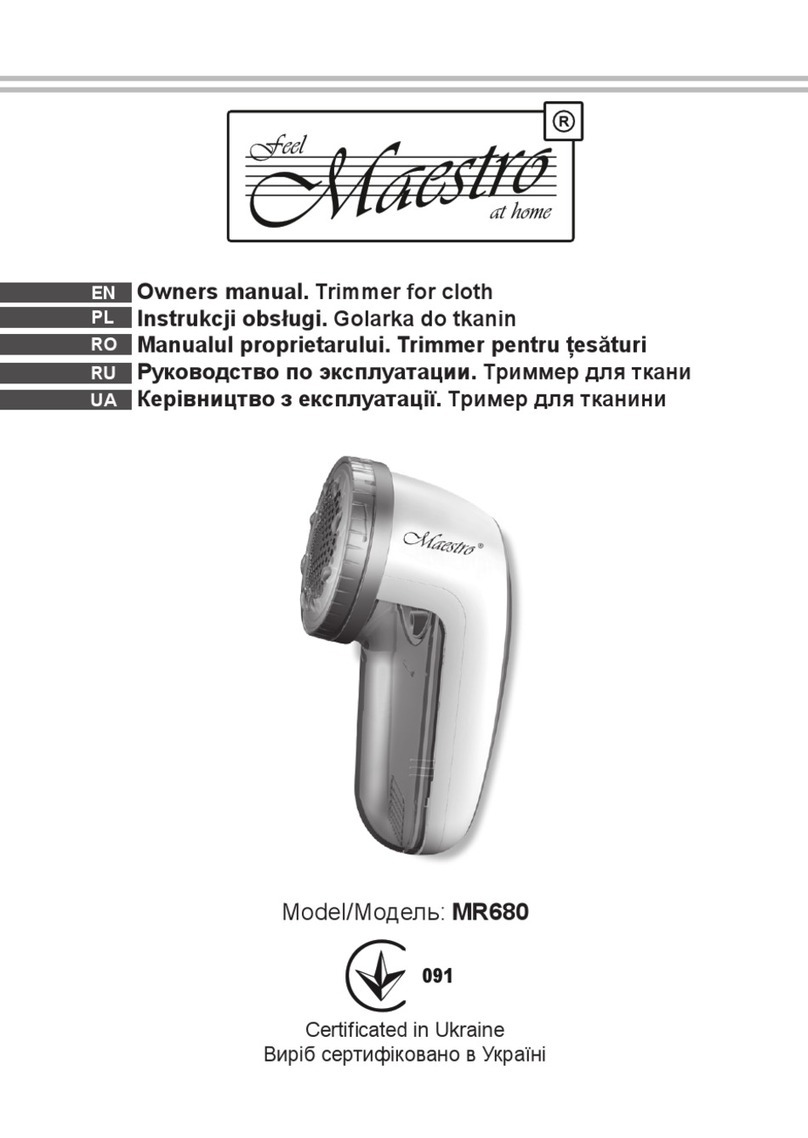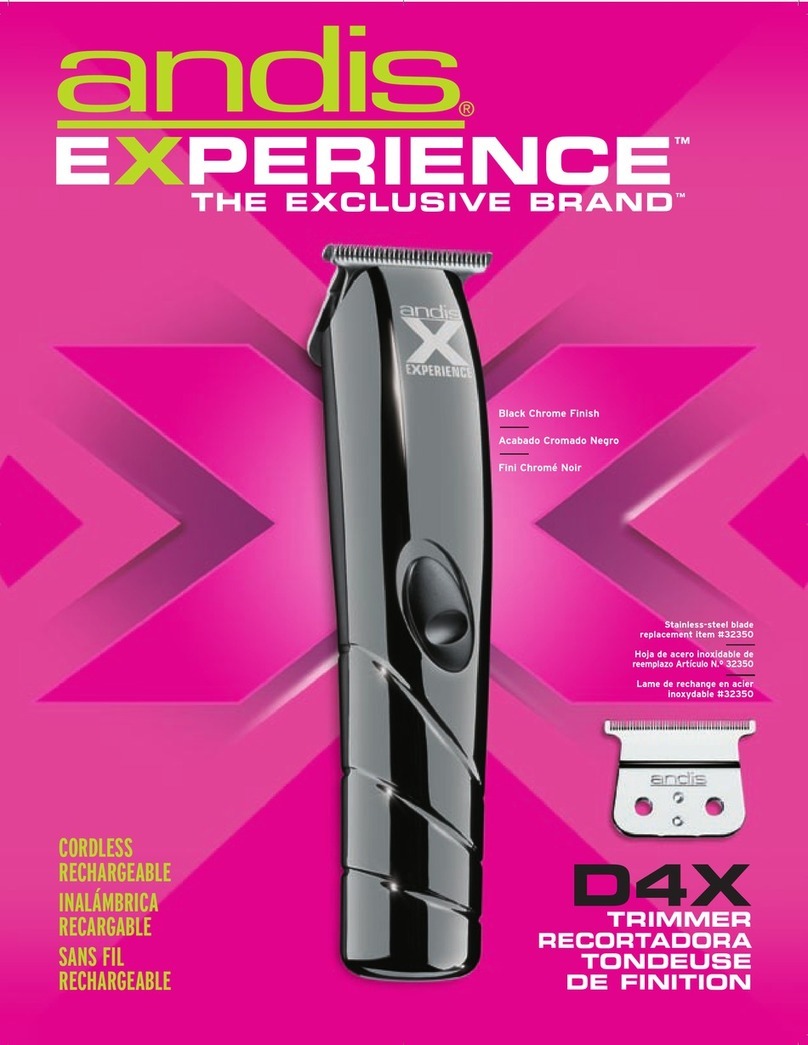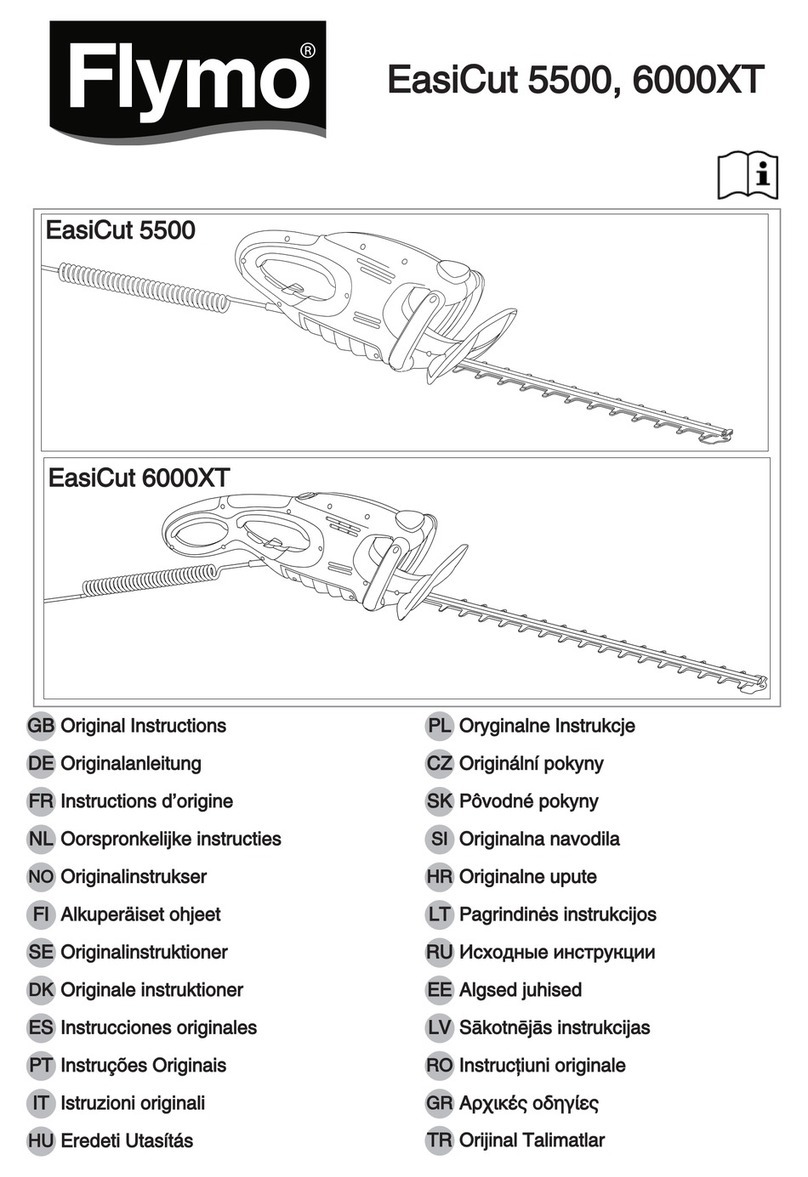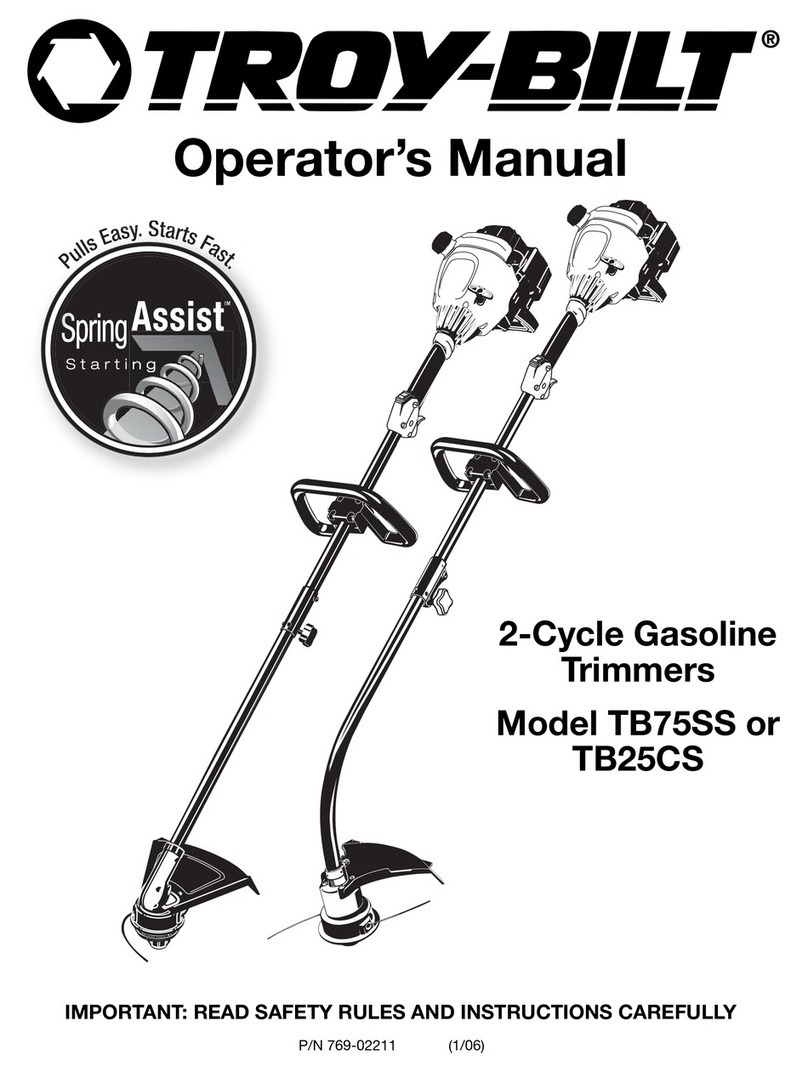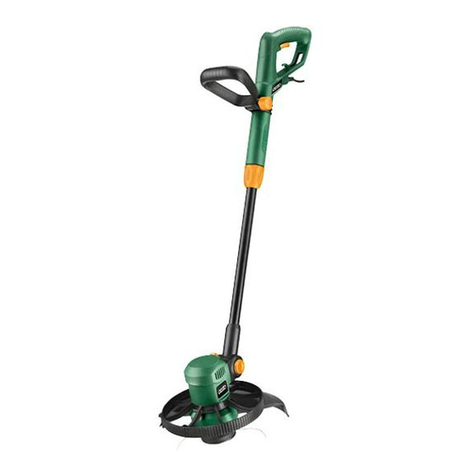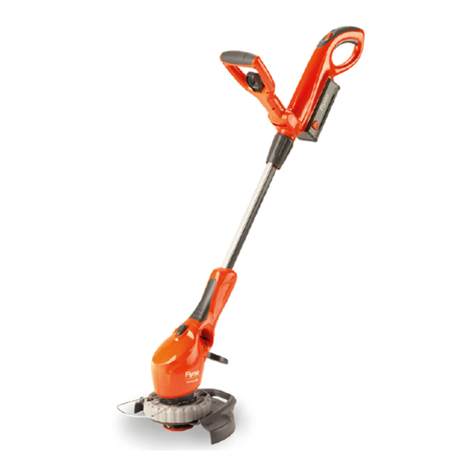
DE-2
4. Sicherheitshinweise
A. Allgemeine Hinweise
1. Die hohe Drehzahl des Schneidwerkzeuges und
der Stromanschluss bringen besondere Gefah-
ren mit sich. Deshalb sind beim Arbeiten mit der
Elektrosense besondere Sicherheitsmaßnahmen
nötig.
2. Ziehen Sie vor sämtlichen Arbeiten, die Sie am
Gerät vornehmen, vor dem Säubern und zum
Transport den Stecker aus der Steckdose. Die
Elektrosense immer vom Netz trennen, wenn sie
unbeaufsichtigt gelassen wird. Vor dem Einstel-
len oder Säubern das Gerät ausschalten und den
Netzstecker ziehen.
3. Sicheren Umgang mit der Elektrosense vom Ver-
käufer oder einem Fachmann zeigen lassen.
4. Minderjährige dürfen die Elektrosense nicht be-
dienen. Gerät nur an Personen weitergeben (aus-
leihen), die mit seiner Handhabung grundsätzlich
vertraut sind. Auf jeden Fall Bedienungsanwei-
sung mitgeben! Jugendliche unter 16 Jahren
dürfen die Geräte nicht bedienen.
5. Der Benutzer ist verantwortlich gegenüber Drit-
ten im Arbeitsbereich des Gerätes.
6. Erlauben Sie niemals Kindern oder anderen Per-
sonen den Umgang mit der Maschine, die mit der
Gebrauchsanweisung nicht vertraut sind.
7. Benutzen Sie die Maschine nur in Tageslicht oder
gutem künstlichem Licht
8. Vor Verwendung der Maschine und nach Ge-
brauch, überprüfen sie diese auf Schäden und
lassen Sie diese reparieren wenn notwendig.
9. Benutzen Sie die Maschine niemals mit beschä-
digten oder fehlenden Teilen.
10. Wer mit der Elektrosense arbeitet, muss gesund,
ausgeruht und in guter Verfassung sein. Recht-
zeitig Arbeitspausen einlegen! - Nicht unter Ein-
uss von Alkohol oder Drogen arbeiten.
11. Keine Änderungen am Gerät vornehmen, Kunst-
stoffschnur nicht durch z.B. Stahldraht ersetzen,
Ihre Sicherheit kann dadurch gefährdet werden.
Für Schäden, die als Folge bestimmungswidrigen
Gebrauchs oder unzulässiger Änderungen auftre-
ten, schließt der Hersteller jede Haftung aus.
12. Die Elektrosense nicht verwenden, wenn Perso-
nen, vor allem Kinder, oder Haustiere in der Nähe
sind.
13. Im Umkreis von 15 m dürfen sich weder weitere
Personen / Kinder noch Tiere aufhalten, da Steine
u.ä. vom rotierenden Schneidkopf weggeschleu-
dert werden können.
B. Anwendungshinweise
14. Elektrosense nur zum Schneiden von Gras und
Unkraut an Mauern, unter Zäunen, an Bäumen
und Stangen, an Treppen, Plattenwegen und
Terrassen, unter Büschen und Hecken, an Steil-
hängen, in Plattenfugen u.ä. einsetzen.
C. Hinweise zum sicheren Gebrauch
15. Wir empfehlen, die Steckdose durch einen Feh-
lerstromschutzschalter mit einem Fehlerstrom
von nicht mehr als 30 mA abzusichern oder
bei Anschluss der Elektrosense einen solchen
zwischenzuschalten. Nähere Auskünfte gibt der
Elektroinstallateur.
16. Vor jedem Arbeitsbeginn Elektrosense auf ein-
wandfreie Funktion und vorschriftsmäßigen, be-
triebssicheren Zustand prüfen. Besonders wich-
tig sind Anschluss- und Verlängerungsleitung,
Netzstecker, Schalter und Schneidkopf.
17. Vor Gebrauch muss die Anschluss- und Verlän-
gerungsleitung auf Anzeichen einer Beschädi-
gung oder Alterung untersucht werden. Die Elek-
trosense nicht verwenden, wenn die Leitungen
beschädigt oder abgenutzt sind.
18. Wenn die Leitung während des Gebrauchs be-
schädigt wird, muss die Leitung sofort vom Netz
getrennt werden. LEITUNG NICHT BERÜHREN,
BEVOR SIE VOM NETZ GETRENNT IST.
19. Achtung! Gefahr! Schneidelemente laufen nach,
nachdem der Motor abgeschaltet wurde. Gefahr
von Finger- und Fußverletzungen!
20. Nur den Vorschriften entsprechende Leitungen
verwenden. Stecker und Kupplungen von Ver-
längerungsleitungen müssen spritzwasserge-
schützt sein. Elektrosense nur mit einwandfreier
Schutzvorrichtung betreiben, auf festen Sitz des
Schneidkopfes achten.
21. Beschädigte Leitungen, Kupplungen, Netzste-
cker und Schneidköpfe nicht verwenden.
22. Motor nur anschalten, wenn Hände und Füße von
den Schneidwerkzeugen entfernt sind.
23. Schutzbrille oder Augenschutz, geschlossene
Schuhe mit grifger Sohle, eng anliegende Ar-
beitskleidung, Handschuhe und Gehörschutz tra-
gen.
24. Unachtsame Benutzung kann durch die rotieren-
den Schneidelemente Verletzungen an Füßen
und Händen verursachen.
25. Elektrosense immer gut festhalten - immer auf
festen und sicheren Stand achten.
26. Ruhig, überlegt und nur bei guten Licht - und
Sichtverhältnissen arbeiten - andere nicht ge-
fährden! Umsichtig arbeiten!
27. Verlängerungsleitung so verlegen, dass sie nicht
beschädigt wird und keine Stolperfallen schafft.
28. Verlängerungsleitung nicht an Kanten, spitzen
oder scharfen Gegenständen scheuern lassen
und nicht quetschen, z.B. in Türritzen oder Fens-
terspalten.
29. Die Schutzabdeckung muss beim Einschalten
des Trimmers dem Körper zugewandt sein.
30. Netzstecker nicht durch Ziehen an der Leitung
aus der Steckdose ziehen, sondern am Netzstecker
anfassen.
31. In unübersichtlichem, dicht bewachsenem Ge-
lände besonders vorsichtig arbeiten!
32. Elektrosense nicht bei Regen im Freien stehen
lassen.
33. Kein nasses Gras schneiden! Nicht bei Regen
benutzen!
34. Verlängerungsleitung so halten, dass sie nicht
